North Macedonia gained independence from Yugoslavia in 1991. Like their new neighbours, many anticipated that this small, ethnically diverse country in the Southern Balkans would quickly fall apart. However, far from unravelling, North Macedonia defied expectations and has flourished on the world stage in recent years.
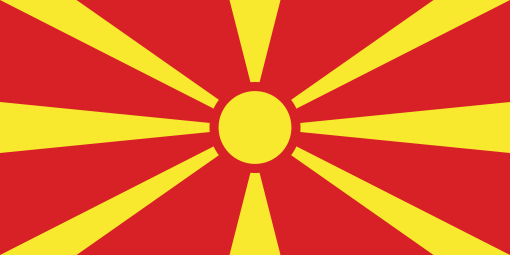
it adopted a new flag to mark its unique cultural identity and aspirations for sovereignty. The current flag design, featuring a golden sun with radiant rays on a red background, symbolizes unity, freedom, and hope for the future. Despite political challenges, particularly around its official name, North Macedonia’s flag has become a powerful emblem of pride and resilience.
Here’s an exploration of the history behind North Macedonia’s flag, the meaning behind its symbols, and what it represents today:
Table of Contents
Flags in North Macedonia’s History
North Macedonia’s roots stretch as far back as the kingdom of Paeonia, which was conquered by Alexander the Great’s Macedonian Empire. While Alexander’s empire didn’t have a distinctive flag as we would recognize them today, it did use the Vergina Sun as their symbol. This would go on to cause significant controversy in contemporary North Macedonia.
Over centuries, the region came under the influence of the Roman and Byzantine Empires, becoming a cultural and trade crossroads between East and West.
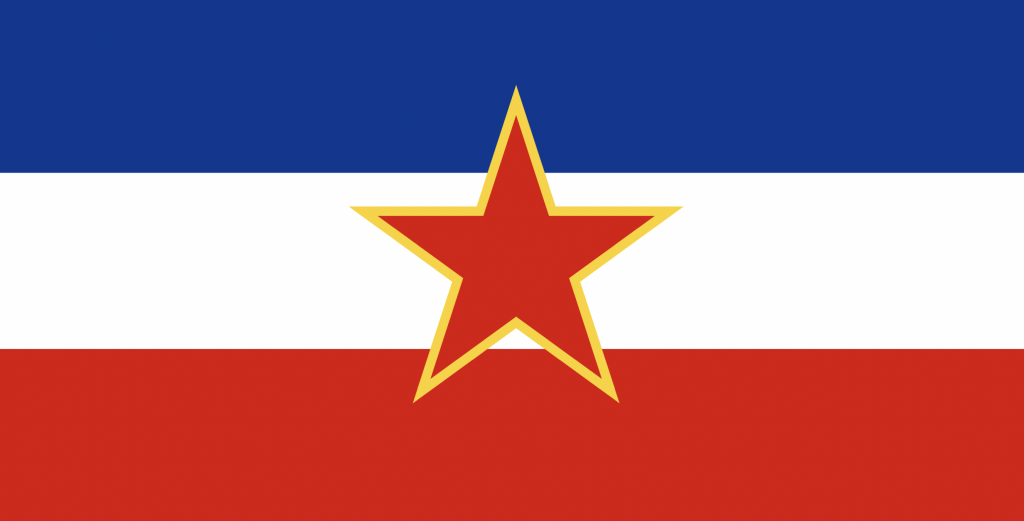

The area was integrated into the Ottoman Empire by the 14th century, a governance than would last for nearly 500 years and leave lasting cultural influences. This was the first time that a distinctive “flag” — the standard Ottoman flag of a red field with a white crescent and star — was flown over the modern territory of North Macedonia.
In 1918, the region became part of the Kingdom of Yugoslavia and later one of six republics within Socialist Yugoslavia after World War II. During this period, North Macedonia didn’t have an independent flag of its own, instead using the Pan-Slavic Yugoslav tricolor. From 1946, the Socialist Republic of Macedonia did have a flag, though it was a simple, standardized design shared across the six Yugoslav republics, lacking distinct identity.
Following independence, North Macedonia initially chose the “Vergina Sun” as its national flag, an ancient symbol tied to the historical region of Macedonia. This design, along with the use of the name “Macedonia” sparked controversy with Greece, which regarded the symbol as a part of its national heritage. To this day, the Greek region of Macedonia uses the Vergina Sun as its provincial symbol, with its flag being the same as the first Macedonian one, albeit with a blue backdrop rather than a red one.
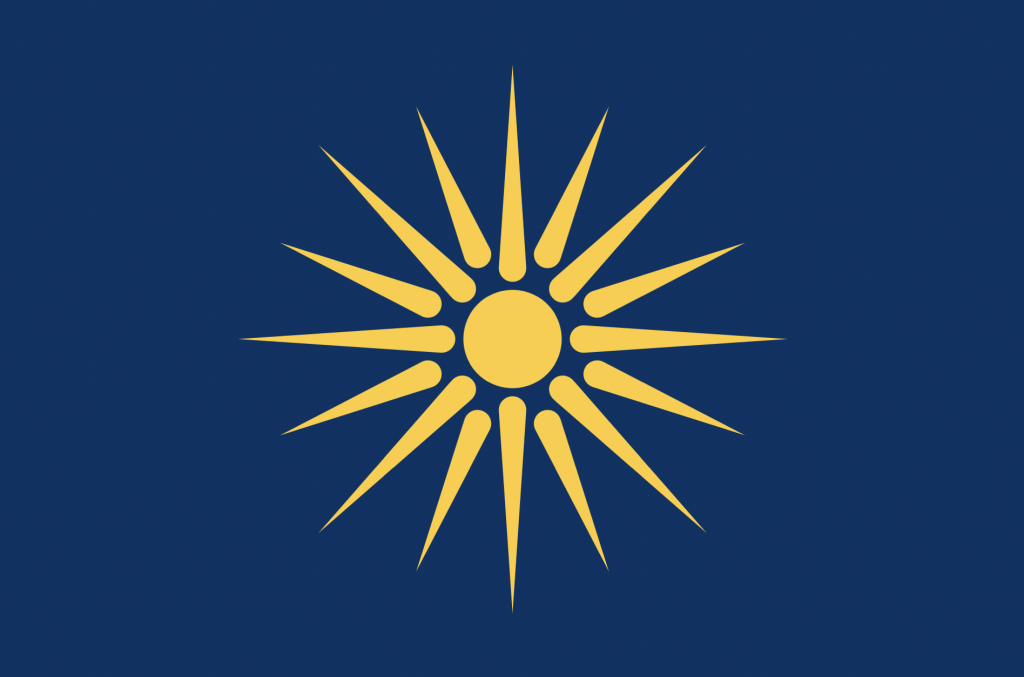
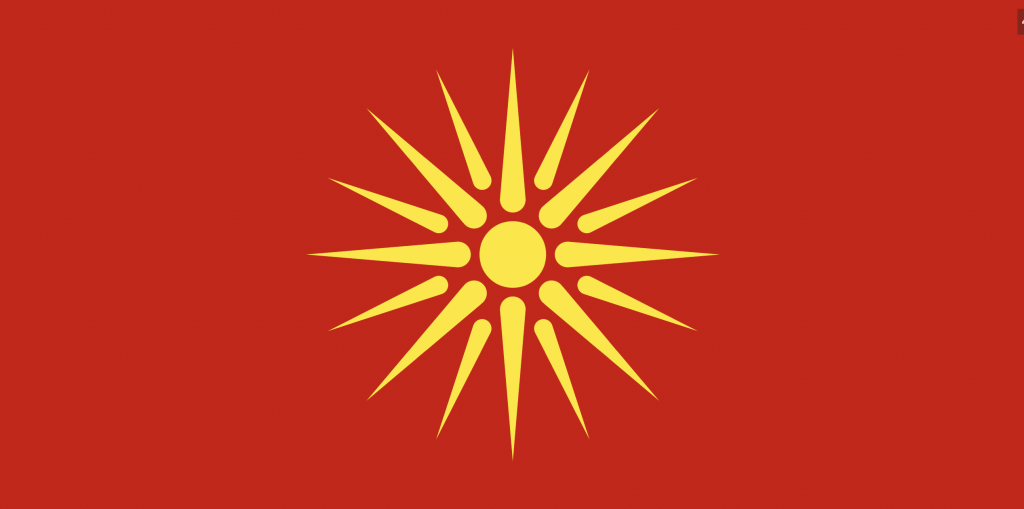
International pressure led North Macedonia to change its flag in 1995. The new design replaced the Vergina Sun with a stylized golden sun and rays, yet was far-enough removed from the original symbol of Alexander the Great that Greece wanted to reserve. This would symbolize a peaceful, modern North Macedonia identity that avoided ethnic or historical conflicts.
Adopting a Unique National Flag
The current flag was designed to convey a unified national identity and a new beginning. Its vibrant red field and radiant sun represent vitality and strength, while the sun’s eight rays radiate outward, symbolizing peace, inclusivity, and a promising future. It’s also an emblem of independence, distancing the country from past disputes and looking ahead.
North Macedonia’s flag is often compared to other Balkan flags, particularly those in neighbouring regions, as it captures a mix of Balkan heritage and modern aspirations.
The Symbolism of the North Macedonian Flag
- Golden Sun: At the centre is a golden sun with eight rays, representing the “new sun of liberty.” This symbolizes unity, peace, and a renewed hope for the nation, highlighting North Macedonia’s commitment to freedom.
- Eight Rays: The rays radiate outwards, symbolizing inclusivity, unity, and a welcoming stance toward all groups within the country.
- Red Background: The red is a traditional Macedonian colour, and symbolizes courage, energy, and strength. It reflects the resilience and determination of North Macedonia’s people.
Why Do I Often See Different Flags in North Macedonia?
While the national flag is displayed on government buildings, in official spaces, and during state events, North Macedonia has a diverse ethnic makeup. Ethnic Albanians, who represent a significant portion of the population, often fly the Albanian flag. In areas with a majority Albanian population, this flag is commonly seen alongside the North Macedonian flag as a representation of their dual heritage and ethnic pride.
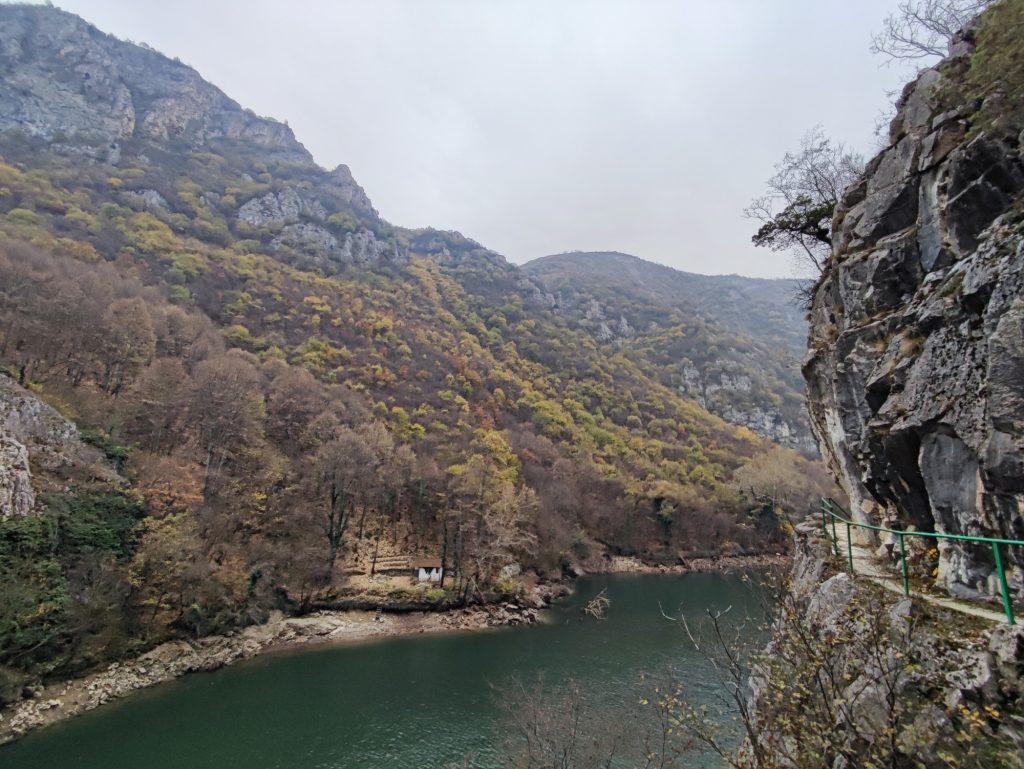
In some cases, ethnic Serbs in North Macedonia may display the Serbian tricolor flag. The presence of multiple flags reflects the country’s complex cultural landscape and the importance of heritage to its citizens.
The Flag’s Symbolism in a Modern Context
North Macedonia’s flag embodies the nation’s hopes for unity and stability within the region. Despite challenges and a complicated political history, the flag’s inclusive symbols convey optimism and a commitment to peace and prosperity in the Balkans.
Seeing the North Macedonia Flag for Yourself
If you’re inspired to see North Macedonia’s rich heritage and culture in person, our Ultimate Yugoslavia tour runs twice a year, offering an in-depth look at the region’s fascinating history. This tour includes a stop in Skopje, where visitors can see the national flag proudly displayed across the capital, along with guided excursions into the countryside and historic sites.

For a more customized experience, we also offer private tours tailored to specific interests, from exploring ancient Macedonian heritage sites to hiking in the scenic Šar Mountains. Visit our North Macedonia page for additional information – we’re here to help you create an unforgettable journey through this remarkable country!





